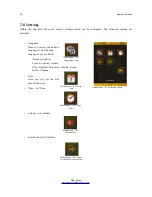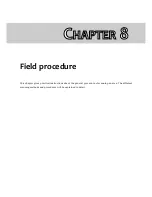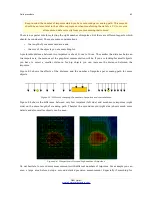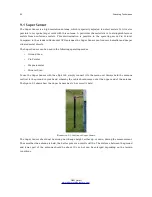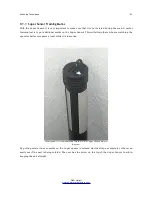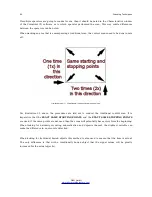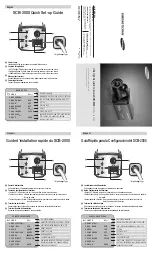
86
Field procedure
Especially in uneven terrain like mountain sides or other inclines, the parallel mode is preferred. When
it comes to speed, the experienced user will very often use the Zig-Zag mode only for the initial scan to
determine if there are anomalies in the area worth further research.
8.3.3 Manual or automatic impulse mode?
Large even or passable surfaces are commonly measured in the automatic mode. The manual impulse
mode is mostly used for difficult uneven terrain, areas where there is quite a bit of growth and if the
measurement result needs to be very accurate.
In terrains with difficult access like mountain cliffs and sides, slippery surfaces or overgrown areas, it is
wise to use the manual impulse mode. Because each impulse will be released manually, you have enough
time to position the probe in the correct way and record the measured value. In this way, you can also
measure accurately previously marked dots of a predefined grid.
8.3.4 Tips from the trainers themselves
When conducting scans, there are some extremely important items that need to be noted. First of all it is
crucial that you relax. When you are tense, you are putting too much pressure on yourself to do the scan
correctly; often resulting in errors.
•
Newly buried targets are difficult to see. Many users receive the equipment and the first thing
they do is go out and bury an object. When an object goes into the ground it changes the natural
signature of the soil and creates some kind of noise. Usually the buried object has a weaker
signature than the unnatural noise and therefor is not detectable. Initial scan images will not
show the buried item but visualize the noisy area in blue or green colors. After the item has been
seasoned, meaning it has been in the ground for a complete cycle of seasons (usually a year), the
noise is reduced and the signature of the buried object becomes visible again.
•
Train on known targets. In the training course at the factory we have several objects that have
been buried for years, just like real targets in the field. These targets can be quickly and easily
identified because they are not natural to the soil. Other targets that you can use in your own
area are buried utilities. Pipes, tanks, electrical, sewers, graveyards, etc... Most of these items
can be found in every community, town or city. This is where you need to begin your training if
you are going to self-train.
•
Get professional training. When you take advantage of receiving the training, either from the
factory or a qualified dealer, you will understand not only the use and operation of the OKM
detector but also the software so much easier and be able to identify targets as well as errors.
•
Do not rely on just one scan measurement. So many users go out into the field and they make a
measurement and see a target. Instead of repeating the scan and reproducing it several times,
they go out and get a shovel and dig. On very rare occasion will the first scan be perfect. Even
the trainers do multiple scans to ensure that they are not looking at areas of mineralization or an
error.
OKM GmbH
www.okmmetaldetectors.com
Содержание eXp 4500
Страница 1: ...FS Future Series eXp 4500NT Version 1 5 User s Manual ...
Страница 5: ...5 9 2 Control Scans 93 OKM GmbH www okmmetaldetectors com ...
Страница 9: ...1 Introduction CHAPTER 1 Introduction ...
Страница 14: ......
Страница 35: ...3 Technical Specifications CHAPTER 3 Technical Specifications ...
Страница 39: ...4 Scope of Delivery CHAPTER 4 Scope of Delivery ...
Страница 44: ......
Страница 78: ......
Страница 88: ......





